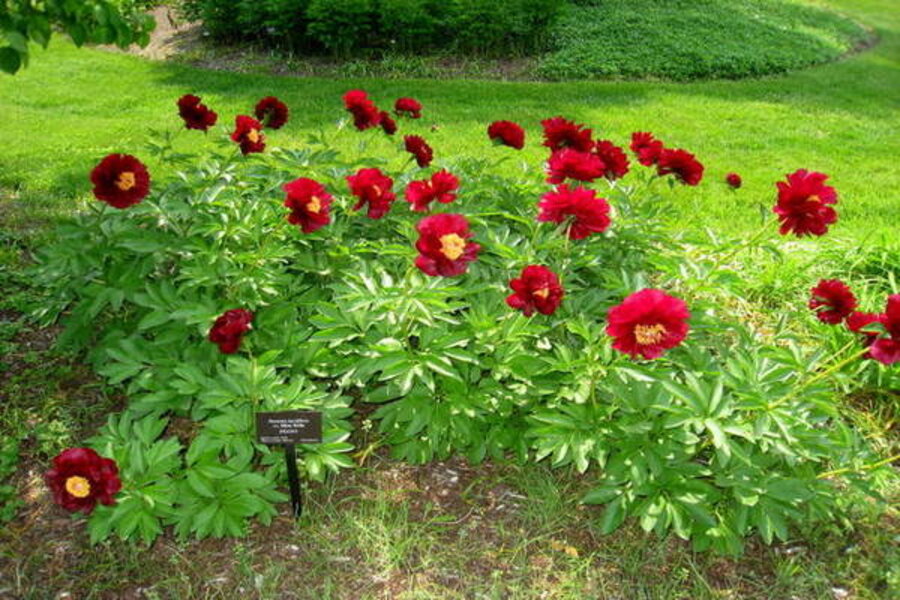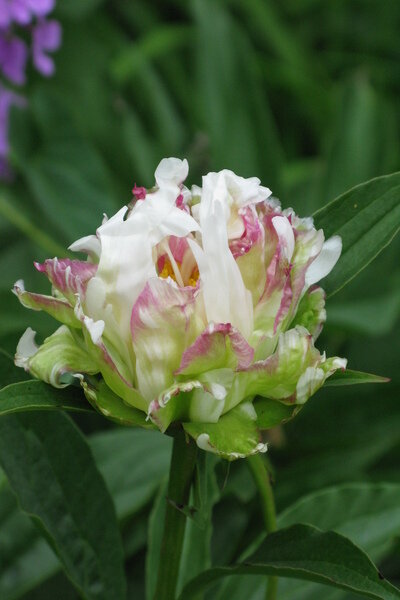Peonies: For gorgeous flowers in spring, plant in fall
Loading...
In my Illinois garden, peonies have always been on my list of exceptionally consistent performers. These old-fashioned perennials have never let me down. Like so many other gardeners the world over, I prize them for their beauty, fragrance, and outstanding hardiness.
Rugged and practically indestructible (except in the South and in warmer parts of California, where many don't perform well), peonies are endowed with the kind of blossoms that make one nostalgic for grandma’s garden. Some of this is due to their ability to last for years with little care – a century is not uncommon – but mostly it is due to the combination of grace and enticing beauty that adds great three-season value to the landscape.
I started collecting peonies the way most people do – by buying the well-known Paeonia lactiflora hybrids that produce blowsy flowers in various shades of pink and creamy white in late May and early June.
Many of these were bred in France during the mid-19th century largely for the cut-flower trade, rather than for gardens. One of the first peony plants that I purchased, that of ‘Sarah Bernhardt’, has stems that are too weak to support the enticing flowers in the garden, though she’s magnificent in a vase.
Go modern
A better selection would have been ‘Dinner Plate’, with her immense, shell-pink, highly fragrant blossoms on truly strong stems that never flop.
But at the time, as even now, that was not what most nurseries and online mail-order companies were promoting.
Yes, there are some outstanding older cultivars, but I find that the newer, more modern hybrids -- besides being available in a much wider range of colors, including bright red, clear yellow, apricot, coral, and orange -- are also bred for stronger stems and compactness.
Take ‘Coral Sunset’ for example. This early bloomer, with her ruffled, semi-double blooms of an intense coral with strong pink overtones, is one of the best for an extravagant display regardless of the quirks of weather. Plus, she is a superior cut flower, lasting more than a week indoors when I cut her in full bud.
If you have been admiring those big, fragrant, voluptuous blossoms every spring and are wondering when to plant them, consider this your reminder that now is the time. Bare root tubers are readily available from many mail order nurseries or you can purchase them grown in containers from your favorite garden center, nursery, or big box store. Concentrate on named cultivars, bypassing containers marked only by color, as many of these are plants of minimal value.
Key to peony success: Proper planting
Considering their long life span,the key to successfully growing peonies, whatever variety you choose, is to choose roots with three-to-five “eyes” (those little growing points or bumps on the root) and to plant them just right.
The simple key to healthy and beautiful peonies is all about proper placement and site preparation before you plant. If you get that right, peonies will provide you with breathtaking flowers for vase and garden for years to come.
Peonies prefer full sun all day, but will bloom with as little as six hours of direct sun daily. They need a well-drained site, mixed with generous amount of well-rotted manure, peat moss, or compost.
Do not plant them too deep, which will result in lots of foliage but no flowers. Make sure the “eyes” of the tubers are pointing up and are covered with only one to two inches of soil. (For full cultural requirements for your area, contact your local Extension service.)
One thing to keep in mind, however, is to be sure to cut and rake up and dispose of peonies’ withered foliage every fal,l as the dead foliage can transmit disease.
------
Betty Earl, the Intrepid Gardener, blogs regularly at Diggin' It. She's the author of 'In Search of Great Plants: The Insider’s Guide to the Best Plants in the Midwest.' She also writes a regular column for Chicagoland Gardening Magazine and The Kankakee Journal and numerous articles for Small Gardens Magazine, American Nurseryman, Nature’s Garden, and Midwest Living Magazine, as well as other national magazines. She is a garden scout for Better Homes and Gardens and a regional representative for The Garden Conservancy. To read more by Betty here at Diggin' It, click here.






